 November
22, 2019. One
of our graduates,
Wisdom
Yao Dornyo,
has published
a book based on the doctoral
dissertation he submitted
at AIU, “Value Mechanics in
Value Science and Theory:
The Discovery, Verification,
and Justification of the Model
of Universality of Value and
its Sensitivity”.
Abstract: The introduction
to value sensitivity was much
digested to serve its intended
reason as the core fundamental
to support the superstructure
of the thesis. The model
of flexibility also known as
the model of universality was hypothesized and tested
through various experiments
with figures and found to
rationally agreeing with value
cores and characteristics of
a system. The essence of
language as a structure very
important to everything as
well as waves are concerned
was outlined. Waves is everything
we could see and hear
and touch, thus, also, wave is
sound, light, heat, the unseen,
and this is digital. The model
of universality was used to
better understand Amdahl,
Gustafson-Barsis, etc. with
their theoretical system speedup
latency theories. The model
of universality was further
pursued to arrive at an expression
for value as v = - n2, where n is the number of trials
to enhance a system and v is
value. In fact, there is seemingly
numerous approaches
to establishing a mechanics of
value which is a whole subject
that could be studied as a
program. Further research on
value and its sensitivity lies
ahead.
Find his published book,
on Amazon https://www.
amazon.es/Forerunning-
Value-Mechanics-Science-
Theory/dp/6200297436 and
MoreBooks!
https://www.
morebooks.de/store/es/book/
forerunning-value-mechanicsin-
value-science-and-theory/
isbn/978-620-0-29743-3
Wisdom Yao Dornyo has
completed a Doctorate program
in Information Technology
& Management at Atlantic
International University.
November
22, 2019. One
of our graduates,
Wisdom
Yao Dornyo,
has published
a book based on the doctoral
dissertation he submitted
at AIU, “Value Mechanics in
Value Science and Theory:
The Discovery, Verification,
and Justification of the Model
of Universality of Value and
its Sensitivity”.
Abstract: The introduction
to value sensitivity was much
digested to serve its intended
reason as the core fundamental
to support the superstructure
of the thesis. The model
of flexibility also known as
the model of universality was hypothesized and tested
through various experiments
with figures and found to
rationally agreeing with value
cores and characteristics of
a system. The essence of
language as a structure very
important to everything as
well as waves are concerned
was outlined. Waves is everything
we could see and hear
and touch, thus, also, wave is
sound, light, heat, the unseen,
and this is digital. The model
of universality was used to
better understand Amdahl,
Gustafson-Barsis, etc. with
their theoretical system speedup
latency theories. The model
of universality was further
pursued to arrive at an expression
for value as v = - n2, where n is the number of trials
to enhance a system and v is
value. In fact, there is seemingly
numerous approaches
to establishing a mechanics of
value which is a whole subject
that could be studied as a
program. Further research on
value and its sensitivity lies
ahead.
Find his published book,
on Amazon https://www.
amazon.es/Forerunning-
Value-Mechanics-Science-
Theory/dp/6200297436 and
MoreBooks!
https://www.
morebooks.de/store/es/book/
forerunning-value-mechanicsin-
value-science-and-theory/
isbn/978-620-0-29743-3
Wisdom Yao Dornyo has
completed a Doctorate program
in Information Technology
& Management at Atlantic
International University.
 November
26, 201. One of
our graduates,
Djerandouba
Yotobumbeti,
has published
an article titled, “Evaluation of
the effectiveness of community
health workers in the fight
against malaria in the Central
African Republic (2012–2017),”
by Transactions of the Royal
Society of Tropical Medicine
and Hygiene in the Oxford
Academic Journal.
Summary: This last decade’s
ongoing conflict in the Central
African Republic (CAR) has
led to gradual and continuous
destruction of health services.
With severe gaps in qualified
health professionals, community
health workers (CHWs)
have become essential to
ensuring health care access to
the affected population. This
article aims to evaluate the
effectiveness of a 10-y CHW
program in the CAR.
Find more information
here:
https://academic.oup.com/
trstmh/advance-article-abstract/
doi/10.1093/trstmh/trz104/56130
50?redirectedFrom=fulltext
November
26, 201. One of
our graduates,
Djerandouba
Yotobumbeti,
has published
an article titled, “Evaluation of
the effectiveness of community
health workers in the fight
against malaria in the Central
African Republic (2012–2017),”
by Transactions of the Royal
Society of Tropical Medicine
and Hygiene in the Oxford
Academic Journal.
Summary: This last decade’s
ongoing conflict in the Central
African Republic (CAR) has
led to gradual and continuous
destruction of health services.
With severe gaps in qualified
health professionals, community
health workers (CHWs)
have become essential to
ensuring health care access to
the affected population. This
article aims to evaluate the
effectiveness of a 10-y CHW
program in the CAR.
Find more information
here:
https://academic.oup.com/
trstmh/advance-article-abstract/
doi/10.1093/trstmh/trz104/56130
50?redirectedFrom=fulltext
 December
17, 2019. The
article titled
“Optimization
of Process
Variables for
Laboratory Scale Production
of Oleochemical Product
Sheaolein Ethylester through
Transesterification” written
by our Academic Advisor
Dr. Mohammad Shahidul
Islam, has been approved to
be published in the Academia
Journal of Scientific Research.
Abstract: Sheaolein is a
fractionated product of shea
butter extracted from African
shea nut. Extensive herbal
properties of sheaolein have
made it an attractive ingredient
in cosmetic industries.
Sheaolein is highly viscous,
semi-solid at room temperature
and causes problems in
oil transfer system. Transesterification
of sheaolein is
one of the ways of reducing its
viscosity through splitting off
its glycerol backbone. For this
purpose, transesterification
of sheaolein with ethanol in
the presence of KOH catalyst
was carried out in this study.
Process variables: (1) reaction
time, (2) catalyst concentration
and (3) stirring speed were optimized
to obtain better phase
separation and higher yield of ethylester production. Kinetic
modeling and simulation were
carried out to aid process optimization.
It was observed that
10-30 min reaction time, 1-1.5%
KOH catalyst by weight of
sheaoelin oil and 500 rpm stirring
speed gave better phase
separation between ethylester
and glycerol phases; and
produced an ethylester yield
of 87.92%. Production of intermediate
by-products is also
low at these process conditions.
The results of this study
will enable production of high
quality oleochemical product
ethylester from sheaolein in
continuous industrial scale
transesterification process.
Read the article here:
https://
www.academiapublishing.org/
journals/ajsr/pdf/2019/Oct/ShahidulIslam%
20et%20al.pdf
Dr. Mohammad Shahidul
Islam has completed a Doctorate
program in Chemical
Engineering at Atlantic International
University.
December
17, 2019. The
article titled
“Optimization
of Process
Variables for
Laboratory Scale Production
of Oleochemical Product
Sheaolein Ethylester through
Transesterification” written
by our Academic Advisor
Dr. Mohammad Shahidul
Islam, has been approved to
be published in the Academia
Journal of Scientific Research.
Abstract: Sheaolein is a
fractionated product of shea
butter extracted from African
shea nut. Extensive herbal
properties of sheaolein have
made it an attractive ingredient
in cosmetic industries.
Sheaolein is highly viscous,
semi-solid at room temperature
and causes problems in
oil transfer system. Transesterification
of sheaolein is
one of the ways of reducing its
viscosity through splitting off
its glycerol backbone. For this
purpose, transesterification
of sheaolein with ethanol in
the presence of KOH catalyst
was carried out in this study.
Process variables: (1) reaction
time, (2) catalyst concentration
and (3) stirring speed were optimized
to obtain better phase
separation and higher yield of ethylester production. Kinetic
modeling and simulation were
carried out to aid process optimization.
It was observed that
10-30 min reaction time, 1-1.5%
KOH catalyst by weight of
sheaoelin oil and 500 rpm stirring
speed gave better phase
separation between ethylester
and glycerol phases; and
produced an ethylester yield
of 87.92%. Production of intermediate
by-products is also
low at these process conditions.
The results of this study
will enable production of high
quality oleochemical product
ethylester from sheaolein in
continuous industrial scale
transesterification process.
Read the article here:
https://
www.academiapublishing.org/
journals/ajsr/pdf/2019/Oct/ShahidulIslam%
20et%20al.pdf
Dr. Mohammad Shahidul
Islam has completed a Doctorate
program in Chemical
Engineering at Atlantic International
University.
 Call for Papers
This Conference will be held
18–19 June 2020 at the University
of Granada in Granada,
Spain.
We invite proposals for paper
presentations, workshops/
interactive sessions, posters/
exhibits, colloquia, focused
discussions, innovation
showcases, virtual posters, or
virtual lightning talks.
2020 Special Focus:
“Playful minds: physical
activity, social potential and
cultural settings.”
Theme 1:
Sporting cultures
and identities Theme 2:
Sport and health
Theme 3:
Sports education
Theme 4:
Sports management and
commercialization
Become a Presenter:
1. Submit a proposal
2. Review timeline
3. Register
Regular registration deadline
18 May 2020
Late registration deadline
18 June 2020
Visit the website:
https://sportandsociety.com
Call for Papers
This Conference will be held
18–19 June 2020 at the University
of Granada in Granada,
Spain.
We invite proposals for paper
presentations, workshops/
interactive sessions, posters/
exhibits, colloquia, focused
discussions, innovation
showcases, virtual posters, or
virtual lightning talks.
2020 Special Focus:
“Playful minds: physical
activity, social potential and
cultural settings.”
Theme 1:
Sporting cultures
and identities Theme 2:
Sport and health
Theme 3:
Sports education
Theme 4:
Sports management and
commercialization
Become a Presenter:
1. Submit a proposal
2. Review timeline
3. Register
Regular registration deadline
18 May 2020
Late registration deadline
18 June 2020
Visit the website:
https://sportandsociety.com
 December 6, 2019. One of our
graduates, Dr. Patricio Bakale,
was recently appointed Secretary
of State for Youth in
Equatorial Guinea.
Patricio Bakale has completed
3 programs —a Bachelor’s,
a Master’s and a Doctoral
Degree— in Sports Sciences at
Atlantic International University.
Congratulations!
December 6, 2019. One of our
graduates, Dr. Patricio Bakale,
was recently appointed Secretary
of State for Youth in
Equatorial Guinea.
Patricio Bakale has completed
3 programs —a Bachelor’s,
a Master’s and a Doctoral
Degree— in Sports Sciences at
Atlantic International University.
Congratulations!
 Call for Papers
This Conference will be held
20–22 July 2020 at the National
and Kapodistrian University
of Athens in Athens, Greece.
We invite proposals for paper
presentations, workshops/
interactive sessions, posters/
exhibits, colloquia, focused
discussions, innovation
showcases, virtual posters, or
virtual lightning talks.
2020 Special Focus: “Reflecting
on Community Building:
Ways of Creating and Transmitting
Heritage.”
Theme 1: Social and community
studies. Theme 2:
Civic and political studies.
Call for Papers
This Conference will be held
20–22 July 2020 at the National
and Kapodistrian University
of Athens in Athens, Greece.
We invite proposals for paper
presentations, workshops/
interactive sessions, posters/
exhibits, colloquia, focused
discussions, innovation
showcases, virtual posters, or
virtual lightning talks.
2020 Special Focus: “Reflecting
on Community Building:
Ways of Creating and Transmitting
Heritage.”
Theme 1: Social and community
studies. Theme 2:
Civic and political studies. 
| David Mbangui Da Costa Bachelor of Education Pedagogy Angola |
María Fabiana Vassallo Bachelor of Psychology Humanistic and Science Argentina |
Tomás Jeremías Bianchi Bachelor of Arts Philosoph y Argentina |
Altonya D. Ferguson Associate of Business Administration Accounting Bahamas |
Aloumedjo Zam Thierry Farrel Doctor of Arts Human Resources Cameroon |
Ronald Joseph Laybolt Doctor of Business Administration Project Management Canada |
| Yvonne Bessem Ojong-Fossung Doctor of Science Public Health and Medical Informatics Canada |
Claudia Elena Vasquez Gutierrez Bachelor of Business Administration Public Accounting Colombia |
Margarita Maria Villegas Vidal Doctor of Business Administration Business Administration Colombia |
Bukasa Musangu Ronsard Bachelor of Business Administration Business Administration Democratic Republic of Congo |
David Lomboto Bosilaito Doctor of Philosophy Education Democratic Republic of Congo |
Orestes Luis Hernández Quiñones Doctor of Science Psychology Equatorial Guinea |
| Lorenza Campanet Segorbe Bachelor of Social and Human Studies Pedagogy Equatorial Guinea |
Mbarga Guy Fabien II Master of Science Information Security Management France |
Margaret Maku Hammond Bachelor of Science Public Administration Ghana |
Daniel Frimpong Bachelor of Science Information Technology Ghana |
Rita Kuku Moshe Bachelor of Science Computer Science Ghana |
Edgar Leonel Marquez Arrecis Bachelor of Business Administration Management Guatemala |
| Jorge Francisco Retolaza Doctor of Science Public Administration and Public Policies Guatemala |
Henson S. King Bachelor of Business Administration Procurement and Supp ly Chain Management Liberia |
Benson Malunga Phiri Bachelor of Science International Relations Malawi |
Christopher Tunde Olaniran Bachelor of Science Solar Energy Nigeria |
Augustine Nwaulune Doctor of Philosophy Engineering Management Nigeria |
Alaku, Anthony Nnanna Doctor of Philosophy Economics and Public Policy Nigeria |
| Alphonse Kee Domki Ali Bachelor of Business and Economics Public Policy Papua New Guinea |
Rosa Maria Arrunátegui Del Rosario Bachelor of Science Psychology Learning and Family Counseling Peru |
Alfredo Jose F. Bustamante Nicholson Doctor of Science Management and Industrial Production Peru |
Francisco Sánchez-Rodríguez Doctor of Philosophy Anglo-American Legal System Puerto Rico |
Godfrey Ngirishi Bachelor of Science Public Health Romania |
Desmond John Bachelor of Science Mechanical Engineering Sierra Leone |
| Elsa Veronica Jimenez Marquez Bachelor of Business Administration Management Spain |
Joel David George Bachelor of Science Operation Management Trinidad and Toba go |
Cathian Alphonse Doctor of Philosophy Human Resource Management Trinidad and Toba go |
Guillermo Moises Lockward Mendez Bachelor of Science Psychology US A |
Jose Adolfo Herrera Acevedo Doctor of Business Administration Business Administration US A |
Auristela Anabel Urieta Serrano Doctor of Philosophy App lied Linguistics for Language Teaching US A |
| Gaetane Claude Garcon Bachelor of Science Project Management US A |
Kapya A. Kapalaula Bachelor of Education Coaching Zambia |
Davison Mange Master of Science Behavioral Economics Zimbab we |
Thomas Munyaradzi Chikadaya Master of Science Statistics Zimbab we |

 Naomi Alethia Pottinger
Naomi Alethia Pottinger
 Zaine Florent Bertrand
Zaine Florent Bertrand
 Greta Singh Shiwgobind
Greta Singh Shiwgobind
 Fabian Bergen
Fabian Bergen

Results
Reasons for living
And suicidal ideation
Hypothesis 1 stated that
there would be a significant
negative relationship between
reasons for living and suicidal
ideation. This hypothesis
investigated the relationship
between overall Reasons for
Living as well as the subscales
of Reasons for living and
Suicidal Ideation. The correlation
coefficients between the
overall Reasons for Living, as the subscales of Reasons for
Living, and suicidal ideation
have been computed and presented
in Table 3 below.
From the Table 1 it can
be seen that the correlation
coefficient observed between
Overall Reasons for Living
and Suicidal Ideation was
significant [r(381)= -0.505,
p= 0.001]. Since the correlation
coefficient is negative it
means that the stronger the
overall Reasons for living of
the respondents, the weaker
their suicidal ideation and
vice versa. The implication of
this is that hypothesis 1 which
stated that there would be a
significant negative relationship
between reasons for living
and suicidal ideation was
supported.
Hypothesis 2 stated that all subscales on Reasons for Living
Scale (Future Optimism,
family alliance, Fear of death
by suicide, Peer acceptance
and Support, and Self-acceptance)
would significantly
predict adolescent suicide ideation,
was partially supported.
(See Table 1)
From Table 1, it is observed
that all the five (5) subscales of
the Reasons for Living Scale
were found to have significant
negative relationship with
suicidal ideation. This means
that the five reasons for living
protect against suicidal
ideation. A significant negative
relationship was observed
between Future optimism
and Suicidal Ideation [r(381)=
-0.343, p= 0.001]. The relationship
observed between Family
Alliance and suicidal ideation
was negative and significant
[r(381)= -0.340, p= 0.001].
Again, a significant negative
relationship was observed
between Peer Acceptanceand-
Support and suicidal
TABLE 1: Summary of Correlations of Overall Reasons for Living, as well as
the Subscales of Reasons for Living scale, and Suicidal Ideation (n=381)

ideation [r(381)= -0.266, p=
0.001]. Furthermore, the correlation
between Suicide related
concerns and suicidal ideation
was negative and significant
[r(381)= -0.346, p= 0.001].
Finally, a significant negative
relationship was observed
between Self-Acceptance
and suicidal ideation [r(381)=
-0.477, p= 0.001]. Among five
subscales of Reasons for living,
Self-Acceptance had the
highest correlation coefficient
with suicidal ideation than
other subscales (reasons for
living). The negative correlation
coefficients observed
implies that the stronger the
adolescents’reasons for living
the weaker their suicidal ideation
and vice versa. In order
words, adolescents are less
likely to contemplate suicide
when they have stronger reasons
to stay alive.
In order to determine the
extent to which each of the
five reasons for living predicts
suicidal ideation, the subscale
scores for the reasons for living scale were entered into
a Multiple Regression model
and the results obtained is
presented in Table 2.
(See Table 2)
The results indicated that the
reasons for living were significant
in predicting suicidal
ideation [F (5,377) =34.41, p
=0.001]. The overall model
(all the five reasons for living)
predicted 29.4% variation in
suicidal ideation. However,
when the five reasons for living
were considered individually,
it was found that Family
Alliance (ß = -.113, p < 0.05),
Suicide-related concerns (ß
=-.173, p < 0.01), Self-Acceptance
(ß = -.306, p < 0.01), and
Future optimism (ß = -.128,
p < 0.05) were significant in
predicting suicidal ideation.
Self acceptance emerged as
the strongest reason for living
that predicts suicidal ideation.
Peer acceptance and support
did not account for significant
variance in suicidal ideation
(ß = -.022, p>0.05). This means
that while family alliance, suicide-related concerns,
self-acceptance and future optimism
significantly predicted
suicidal ideation, peer acceptance
and support did not. An
important thing to note from
Table 4 is that all beta values
observed for all the reasons for
living were negative, indicating
that an increase in the
five reasons for living reduces
suicidal thoughts in adolescents.
The implication of this
is that; the hypothesis 1 (b)
which stated that all subscales
on Reasons for Living Scale
(Future optimism, Family
alliance, Fear of death by
suicide, Peer acceptance and
Support, and Self acceptance)
would significantly predict
adolescents‘suicide ideation
was partially supported.

The influence of Gender
on Reason for Living (RFL)
and Suicidal Ideation
The hypothesis 3 predicted
that gender would moderate
the relationship between
reasons for living and suicidal
ideation. This was to investigate
whether gender of the
adolescents would influence
the relationship between RFL
and Suicidal ideation. The
Hierarchical Multiple Regression
was used in testing this
hypothesis and the results
obtained were summarized in
Table 3 below.
(See Table 3)
Model 1 showed that reasons
for living (RFL) accounted for
25.5% variance in suicidal ideation.
It can be observed that
RFL had a significant influence
on suicidal ideation [F (1,381)
=130.66, p =0.001], (ß = -.505,
p =0.001). This means that an
increase in RFL is associated
with a decrease in the level
of suicidal ideation among
adolescents. The results also
showed that the interaction
between RFL and Gender
(Model 3) was significant [F
(1,380) =47.73, p <0.01], (ß =
.112, p <.05). This implies that
gender significantly moderate
the relationship between RFL
and suicidal ideation. Model
3 showed that the interaction
between sex of the respondents
and RFL accounted for
only 1.2% variance in suicidal
ideation. The conclusion that
is drawn from this result is
that hypothesis 6 which stated
that gender would moderate
the relationship between
reasons for living and suicidal
ideation was confirmed.

Discussion
Reasons for living (RFL)
and suicidal ideation (SI)
The results obtained have
indicated that higher scores
on RFL were significantly
associated with lower scores
on suicidal ideation. Also as
predicted by the hypotheses
(1 b), all the five RFL that were
investigated: family alliance,
peer acceptance and support,
fear of death by suicide and
self-acceptance and future
optimism were found to correlate
negatively with SI. This
means that the stronger each
of these reasons to stay alive
are, the weaker the thoughts
about ending their own lives.
This is because RFL serve as
protective factors against SI.
For instance, when adolescents
have strong optimism
about the future, they would
not desire to commit suicide.
Also, when they have a stronger
sense of family alliance
and strong fear of death by
suicide, their thoughts of committing
suicide would be less.
More detailed examination
of the five reasons for living,
self-acceptance was strongest
in predicting SI. Also it was
found that even though higher
sense of peer acceptance and
support protected against
suicidal ideation, it does not
significantly predict suicidal
ideation. The current findings
are consistent with several
previous studies (eg. Kwok
& Shek, 2010; Malone, et al.,
2000; Norhayati, Amit, Che
Din, & Ong, 2017).
Gender differences
in suicidal ideation
It was predicted that the gender
of the participants would
moderate the relationship
between reasons for living
and suicidal ideation. Results
obtained showed that the
moderation effect of gender
on the relationship between
RFL and suicidal ideation was
significant. This means that
the result confirmed the predictions
made by the stated
hypothesis. The results have
also established that gender
as an independent factor influences suicidal ideation.
In fact it was established that
male adolescents reported
higher suicidal ideation than
female adolescents. Also
females have higher reasons
for living than males. Furthermore,
RFL and suicidal
ideation were found to have
significant inverse relation.
Since a significant relationship
was observed between
RFL and suicidal ideation
and gender was observed to
independently influence RFL
and suicidal ideation, it is
conspicuous that gender as
an independent factor would
have significant moderation
effect on that relationship.
The higher reasons for living
that was reported by females
than males can probably
explain why males are more
successful at suicidal behaviors
than females. The present
findings are consistent with
previous studies (eg. Eshun,
2003; Luo, Wang, Wang, & Cai,
2016; Nwosu & Odesanmi, 2001;
Sukhai, Harris, Moorad, &
Dada, 2010).
Conclusion
Suicide remains a major
public health concern worldwide.
The current study is
imperative since it aids in
understanding the dynamics
of suicidal ideation in relations
to factors that leave the
individual vulnerable and prone to suicidal behaviors,
and factors that protect the
individual against suicide. It
is explicit from the findings of
the study that stronger reasons
for living are likely to predict
lower suicidal thoughts in
adolescents. Among the five
reasons for living that were
investigated, family alliance,
sense of self acceptance, fear of death by suicide and future
optimism are significantly
stronger in protecting Ghanaian
adolescents against
suicidal ideation than peer acceptance
and support. Suicide
can therefore be prevented
when management strategies
consider reasons for living in
adolescents.
The End
REFERENCES. Batigun, A. (2005). Suicide Probability: A Study on Reasons
for Living, Hopelessness and Loneliness. Turkish Journal of Psychiatry, 16(1). |
DeLeo, D., Bertolote, J., & Lester, D. (2002). Self-directed violence. In D. L. Krug
EG, World Report on Violence and Health (pp. 185–212.). Geneva,: World Health
Organization. | Eshun, S. (2003). Sociocultural Dete,rminants of Suicide Ideation:
A Comparison Between American and Ghanaian College Samples . Suicide and
Life-Threatening behaviour, 3 (2); 165-171. | Jordan, J. (2001). Is suicide bereavement
different? A reassessment of the Literature. . Suicide and Life-Threatening
Behavior, 31 (1): 91-102. | Kwok, S., & Shek, D. (2010). Hopelessness, parentadolescent
communication, and suicidal ideation among Chinese adolescents in
Hong Kong. . Suicide Life Threat Behav. , 40(3):224–233. | Lewinsohn, P., Rohde,
P., Seeley, J., & Baldwin, C. (2001). Gender differences in suicide attempts from
adolescence to young adulthood. J Am Acad Child Adolesc Psychiatry, 40(4):427–
434. | Luo, X., Wang, Q., Wang, X., & Cai, T. (2016). Reasons for living and hope as
the protective factors against suicidality in Chinese patients with depression: a
cross sectional study. BMC Psychiatry, 16:252 DOI 10.1186/s12888-016-0960-0. |
Malone, K. M., Oquendo, M. A., Haas, G., Ellis, S. P., Li, S., & Mann, J. J. (2000).
Protective Factors Against Suicidal Acts in Major Depression: Reasons for Living.
American Journal of Psychiatry, 157:1084-1088. | Norhayati, I., Amit, N., Che Din,
N., & Ong, H. C. ( 2017). Gender differences and psychological factors associated
with suicidal ideation among youth in Malaysia. Psychol Res Behav Manag., 10:
129–135. | Nwosu, S., & Odesanmi, W. (2001). Pattern of suicides in Ile-Ife, Nigeria.
West African Journal of Medicine, , 20(3): 259-62. | Ramsden, E., & Wilson, D.
(2014). The Suicidal Animal: Science and the Nature of Self-Destruction. Past
& Present , 201–242, https://doi.org/10.1093/pastj/gtu015. | Sukhai, A., Harris,
C., Moorad, R., & Dada, M. (2010). Crime Suicide by self-immolation in Durban,
South Africa: a five-year retrospective review. Journal of Forensic Medical
Pathology, 23(3): 295-298. | World Health Organization. (1999). Figures and facts
about suicide. Geneva: WHO. | World Health Organization. (2009, 11 15). Suicide
prevention in different cultures. Retrieved from http://www.who.int: http://www.
who.int/mental_health/prevention/suicide/wspd_2009_statement.pdf | Young,
I., Iglewicz, A., Glorioso, D., Lanouette, N., Seay, K., Ilapakurti, M., & Zisook, S.
(2012). Suicide bereavement and complicated grief. Dialogues Clin Neurosci. , 14(2):
177–186. | Zampora, J., Seburn, L., Brackenbury, J., & Tagalik, S. (2005). A Report
on Availability and Accessibility of Information on Mental Health and Suicide
Prevention Issues in Nunavut. Centre of Excellence for Children and Adolescents
with Special Needs. Arviat: Nunavut, Canada.

We are in days close to
2020 of the Gregorian
calendar and many have the
idea that with a number that
looks special we will have a
different future than what the
past years have been. 2020
and the world will be different.
2020, a new year and sure
things will be different.
What is the reason to expect
them to be different?
We are witnessing the social
discontent that seems to grow
and move from this country to
the other.
We see our planet mourn
from one region to another
because now it’s a hurricane
here, in a few days a typhoon
in Asian countries, later huge
snowfall in other countries,
fires here or floods there.
What is notorious is that
in the face of so many difficulties,
in what seems all
together, humanity wants new
situations to arise for all.
Everyone seems to want a
new dawn of our planet and the society that inhabits it.
Everyone is looking for a
horizon, a future of opportunities
for all, of well-being
for all. The question is where
does everything that is living
come from?
If we look at the history of
mankind, it seems that the
same situations have always
Occurred human beings
taking
off property through wars,
through violence and also
natural disasters.
The question that should
be asked is: What do human
beings do so that everything
seems to remain the same?
Making an analysis of the
Social History of Humanity
we see that progress is made
in terms of science, progress
is made in terms of technology,
progress is being made
in marketing, but well-being
seems to be that it’s buying
and buying more and more
sophisticated goods.
How to find that horizon we
want, that we need to feel that
life is the most beautiful thing
we have?
It's not about doing science
and more science because our
History as human beings is
that we are good for that job:
doing science.
What we need is to look for
another way, another thought
of who we are as human beings.
So much intelligence dedicated
to science and material
well-being; why we don’t apply
it to generate a society where
there is abundance for all.
How to find the path where
other human beings exist?
It seems that we have to
think about the race for goods
and see how to create the
necessary elements so that
well-being reaches as soon as
human beings are born on the
face of our planet.
We need all human beings
to be equal, that everyone has
a chance of the goods they
need to have a satisfying life.
We have to work to stop the
crazy race in which we are:
science to make technology
and technology and science for
products for the market, information
to generate needs and
discontent that to lack those
products is to be unhappy.
Science and science also to
create weapons
This 2020 that begins we
must be creating the basis for
a horizon of hope of well-being
for 90% of the world population
that is out of wealth.
We must work on all the lines
that constitute our social life,
our economic life, our life of
learning to build a better world.
We must be messengers of change in each of our
activities.
Where can we generate
the horizon of well-being for
many human beings who want
to have an enriching life?
A horizon is built on education,
on health, on the quality
of work, on the welfare of
health and even on the wellbeing
of recreation.
A horizon is that all human
beings can believe that they’ll
achieve a life in which they
can develop their skills.
A horizon is that there are
social security guarantees; the
same justice for all.
A horizon is that the father
can believe that his children
will reach higher goals than
he had.
A horizon is that it’s believed
that what is produced
in a country will benefit
everyone.
A horizon is that medical
care benefits everyone;
that human beings don’t die
because there is not enough
health care.
A horizon is that parents
don’t have to put their children
to work while they are minors
so that they can obtain a food.
A horizon is that human
beings can achieve the necessary
education to obtain a job
that allows them to live or
that can be dedicated to being
entrepreneurs.
A horizon is to sleep and know that you have the social
organization necessary for
governments to do what they
must do for the welfare of the
governed.
A horizon is to know that
when you reach the mature
age you will have the necessary
social security.
We are living in such a way
that citizens don’t know what
governments are for. It seems
that there is no order on the
planet.
We have to work each of
us to build the necessary elements so that each human
being upon waking up every
sunrise has the security horizon
to be happy.
It is said that there is better
assistance for health, work,
housing and education, what
is needed is that it reaches
everyone.
We have to become aware
that the horizon has to be
for every human being that
inhabits this planet.
We need to change our
welfare mentality; a beautiful
and safe horizon is not material goods.
The safety and welfare
horizon is the inner
peace.
We have to aware also
that every human being
is a boat companion
because each one has the
same rights.
We have to build the
horizon we need!
We can, we only have
to want!
According to Einstein:
“If you look for different
results don’t do the same”.
Some students do not have a lot of time to study. They feel like they have to read their books fast. These students do not read slowly. They use a reading method called scanning. Do you ever scan the reading material to read quicker? If so, there is a way to improve your scanning. Let’s talk about scanning as you read. Each student is unique and unrepeatable at AIU. Some students study better if they read fast. Some students study better if they read slower. It all depends on how your mind assimilates and comprehends information to be used later. So it is not wrong to scan your books as you read, as long as you are able to recall and use the information after. Normally the goal of scanning is to locate certain topics or facts in the reading material. So, you have to know what you are looking for. However, as you scan your book, you will find an interesting topic. Then you can slow down and read more carefully that section of the book. You can also scan to answer a specific question. You scan for specific key words related to your question. When you find the section where the answer is, then you can slow down and read more carefully. You must have some precaution with scanning. It actually requires a more intense type of concentration and can be tiring. You also have to be careful of not allowing your attention to wander, because the mind is not deeply involved in the reading material. So, the best way to use scanning is to find information that is relevant and interesting to you. Then slow down and read that section more carefully.

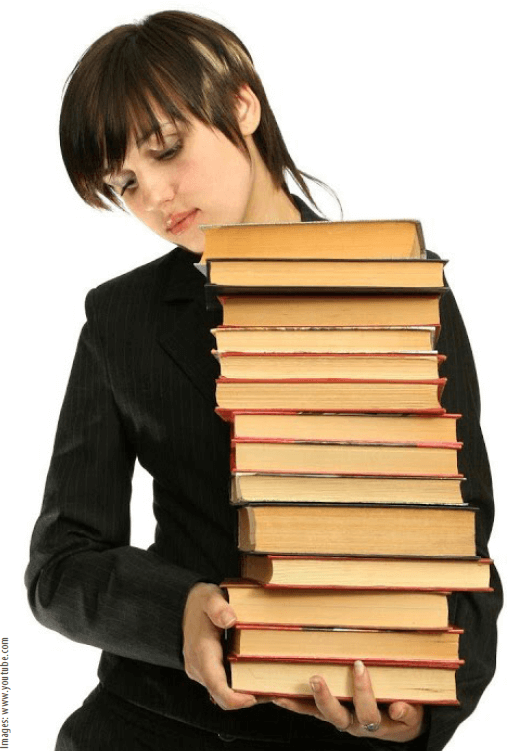
 A video montage of a physics professor
has gone viral, because he
really puts the effort into his classes.
Last week (Dec 9–13), physics
student Erica (its_riccaa on Twitter)
tweeted a montage of the experiments
her professor at Tidewater
Community College in Virginia Beach
performed this semester, all in the
name of educating his students. Dr.
David Wright –in his 70s– does everything
from sitting on a skateboard
and propelling himself using a fire
extinguisher to bringing in and then
lying on a bed of nails to demonstrate
force per unit area.
Erica tweeted out the video under
the caption “Y’all need to see this
video collage of all the crazy things my
Physics Professor did this semester”.
It has since received nearly half a million
retweets. People are big fans, and
wish they’d had a physics teacher so
invested in his work and able to make
the subject fun.
He has since learned of his viral
fame via email and taken it humbly,
writing to Erica: “Thank you very
much for sharing that with me. It was
an amazing semester, because I had
amazing students”. He has also been
interviewed by WTKR, where you can
see even more of his fun experiments.
If only all teachers were like this, or
had the adequate funding ...
A video montage of a physics professor
has gone viral, because he
really puts the effort into his classes.
Last week (Dec 9–13), physics
student Erica (its_riccaa on Twitter)
tweeted a montage of the experiments
her professor at Tidewater
Community College in Virginia Beach
performed this semester, all in the
name of educating his students. Dr.
David Wright –in his 70s– does everything
from sitting on a skateboard
and propelling himself using a fire
extinguisher to bringing in and then
lying on a bed of nails to demonstrate
force per unit area.
Erica tweeted out the video under
the caption “Y’all need to see this
video collage of all the crazy things my
Physics Professor did this semester”.
It has since received nearly half a million
retweets. People are big fans, and
wish they’d had a physics teacher so
invested in his work and able to make
the subject fun.
He has since learned of his viral
fame via email and taken it humbly,
writing to Erica: “Thank you very
much for sharing that with me. It was
an amazing semester, because I had
amazing students”. He has also been
interviewed by WTKR, where you can
see even more of his fun experiments.
If only all teachers were like this, or
had the adequate funding ...
 If science is an objective means of
seeking truth, it’s also one that requires
human judgments. ...
Psychologist Eric Uhlmann at
INSEAD in Singapore, had previously
spearheaded a study that gave a single
data set to 29 research teams and asked
them to use it to answer: “Do soccer
referees give more red cards to darkskinned
players than light-skinned
ones?” ... The red card study showed
how decisions about how to analyze
data could influence the results, but
Uhlmann also wondered about the
many other decisions that go into a
study’s design. So he initiated this latest
study, an even larger and more ambitious
one, which will be published in
The Psychological Bulletin. The project
started with five hypotheses that had
already been tested experimentally
but on which results had not yet been
published.
Aside from the hypothesis about
implicit associations described above,
these concerned things like how
people respond to aggressive negotiating
tactics or what factors could make
them more willing to accept the use of
performance-enhancing drugs among
athletes. Uhlmann presented the same
research questions to more than a
dozen research teams without telling
them anything about the original study
Read full text:
If science is an objective means of
seeking truth, it’s also one that requires
human judgments. ...
Psychologist Eric Uhlmann at
INSEAD in Singapore, had previously
spearheaded a study that gave a single
data set to 29 research teams and asked
them to use it to answer: “Do soccer
referees give more red cards to darkskinned
players than light-skinned
ones?” ... The red card study showed
how decisions about how to analyze
data could influence the results, but
Uhlmann also wondered about the
many other decisions that go into a
study’s design. So he initiated this latest
study, an even larger and more ambitious
one, which will be published in
The Psychological Bulletin. The project
started with five hypotheses that had
already been tested experimentally
but on which results had not yet been
published.
Aside from the hypothesis about
implicit associations described above,
these concerned things like how
people respond to aggressive negotiating
tactics or what factors could make
them more willing to accept the use of
performance-enhancing drugs among
athletes. Uhlmann presented the same
research questions to more than a
dozen research teams without telling
them anything about the original study
Read full text:
 In the early days of the Cold War, the
Bikini Atoll in the Marshall Islands
was pummelled with 22 of the US’s
newly developed nuclear bombs. Even
today ... the scars of this unimaginable
power and destruction can still be seen
in the geology of the seafloor.
A team of oceanographers, geologists,
and marine archaeologists have
recently turned their expertise towards
the Bikini Atoll coral reef and carried
out a comprehensive acoustic survey
of the former nuclear bomb test sites.
Presenting their findings ... their
work has revealed the craters and deep
pits left by the detonation of various
nuclear bombs, along with the dozens
of shipwrecks that fought in the Second
War World’s Pacific theatre and were
sunk during post-war atomic tests.
“Bikini was chosen because of its
idyllic remoteness and its large, easily
accessible lagoon,” survey team-leader
Dr. Art Trembanis from the University
of Delaware told reporters at the AGU
meeting, according to BBC News. ...
The Bikini Atoll might have been
chosen as the target for the atomic
tests because of its remoteness, but
many of the other nearby Marshall Islands
were inhabited at the time. As a
result, US authorities forced hundreds
of Micronesian inhabitants of the atoll
to “temporarily relocate,” although
parts of the Marshall Islands are still
more radioactive than Chernobyl and
over 660 islanders were irradiated. ...
In the early days of the Cold War, the
Bikini Atoll in the Marshall Islands
was pummelled with 22 of the US’s
newly developed nuclear bombs. Even
today ... the scars of this unimaginable
power and destruction can still be seen
in the geology of the seafloor.
A team of oceanographers, geologists,
and marine archaeologists have
recently turned their expertise towards
the Bikini Atoll coral reef and carried
out a comprehensive acoustic survey
of the former nuclear bomb test sites.
Presenting their findings ... their
work has revealed the craters and deep
pits left by the detonation of various
nuclear bombs, along with the dozens
of shipwrecks that fought in the Second
War World’s Pacific theatre and were
sunk during post-war atomic tests.
“Bikini was chosen because of its
idyllic remoteness and its large, easily
accessible lagoon,” survey team-leader
Dr. Art Trembanis from the University
of Delaware told reporters at the AGU
meeting, according to BBC News. ...
The Bikini Atoll might have been
chosen as the target for the atomic
tests because of its remoteness, but
many of the other nearby Marshall Islands
were inhabited at the time. As a
result, US authorities forced hundreds
of Micronesian inhabitants of the atoll
to “temporarily relocate,” although
parts of the Marshall Islands are still
more radioactive than Chernobyl and
over 660 islanders were irradiated. ...
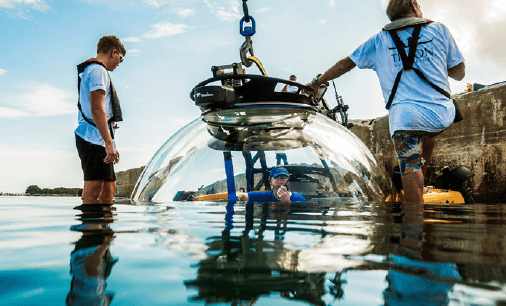 Bruce H. Robison, a marine biologist
at the Monterey Bay Aquarium
Research Institute, began prowling the
deep Pacific in a revolutionary craft
in 1985. It was a giant bubble of clear
plastic that gave its occupant stunning
panoramic views, instead of requiring
them to peer through a porthole.
“It was absolutely transformative,”
Dr. Robison said recently. “The profusion
of life was so much greater than
what I had imagined.” The dark sea
was alive: glowing, flashing, shimmering.
“It was amazing to see all this bioluminescence
and realize it’s a major
form of communication,” he said. “It
really changes your perspective.”
Three-plus decades later, bubble craft
have gone mainstream, and thousands
of people are experiencing that deepsea
vista. While Elon Musk and Jeff
Bezos advance space travel, another
set of entrepreneurs is going in the
opposite direction, seeking to expand
the exploration of inner space. Fans of
the undersea craft sometimes call these
new submersibles inner spaceships.
“They keep reaching deeper and
deeper,” said Will Kohnen, who tracks
development of bubble craft for the
Marine Technology Society, a professional
group. Much of the activity, he
added, arises from growing concern
about the ocean’s health: “People
want to see it firsthand. It’s all about
connecting with the ocean.”
Bruce H. Robison, a marine biologist
at the Monterey Bay Aquarium
Research Institute, began prowling the
deep Pacific in a revolutionary craft
in 1985. It was a giant bubble of clear
plastic that gave its occupant stunning
panoramic views, instead of requiring
them to peer through a porthole.
“It was absolutely transformative,”
Dr. Robison said recently. “The profusion
of life was so much greater than
what I had imagined.” The dark sea
was alive: glowing, flashing, shimmering.
“It was amazing to see all this bioluminescence
and realize it’s a major
form of communication,” he said. “It
really changes your perspective.”
Three-plus decades later, bubble craft
have gone mainstream, and thousands
of people are experiencing that deepsea
vista. While Elon Musk and Jeff
Bezos advance space travel, another
set of entrepreneurs is going in the
opposite direction, seeking to expand
the exploration of inner space. Fans of
the undersea craft sometimes call these
new submersibles inner spaceships.
“They keep reaching deeper and
deeper,” said Will Kohnen, who tracks
development of bubble craft for the
Marine Technology Society, a professional
group. Much of the activity, he
added, arises from growing concern
about the ocean’s health: “People
want to see it firsthand. It’s all about
connecting with the ocean.”
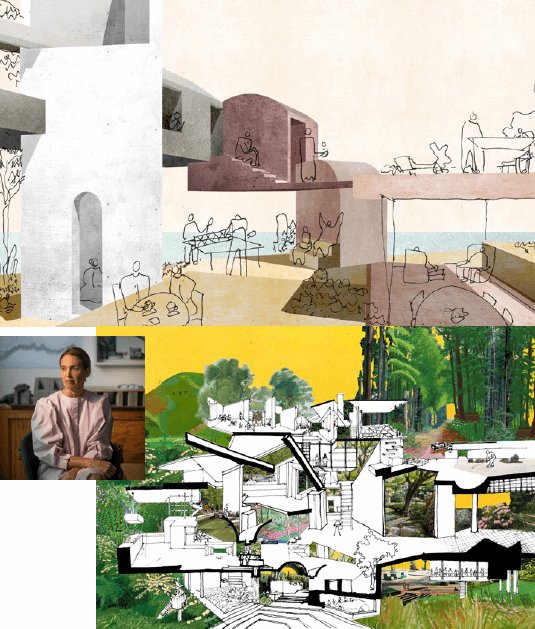 Mexican architect Tatiana
Bilbao refuses to produce
computer visualisations of
designs still in progress. She says
that making collages helps her to
develop more exciting buildings.
Bilbao’s work is currently on
show at the Louisiana Museum
in Denmark. The exhibition
doesn’t contain any computer
renderings; instead designs for
projects such as Casa Ajijic and
Vivienda Popular are shown
through models, sketches and
collages.
The architect doesn’t like finalised
images as they can become
obstacles in the creative process.
She prefers collage as she believes
it fosters a more collaborative
approach to design.
“I want my architecture to be
a platform for anyone to create
their own way of living,” she told
Dezeen. “I think a collage accepts
all of those personalities, diversities
and complexities that are not
only my ideas.”
“A collage also accepts processes,
it accepts mistakes,” she
continued.“I like to think that our
buildings are the same.”
Mexican architect Tatiana
Bilbao refuses to produce
computer visualisations of
designs still in progress. She says
that making collages helps her to
develop more exciting buildings.
Bilbao’s work is currently on
show at the Louisiana Museum
in Denmark. The exhibition
doesn’t contain any computer
renderings; instead designs for
projects such as Casa Ajijic and
Vivienda Popular are shown
through models, sketches and
collages.
The architect doesn’t like finalised
images as they can become
obstacles in the creative process.
She prefers collage as she believes
it fosters a more collaborative
approach to design.
“I want my architecture to be
a platform for anyone to create
their own way of living,” she told
Dezeen. “I think a collage accepts
all of those personalities, diversities
and complexities that are not
only my ideas.”
“A collage also accepts processes,
it accepts mistakes,” she
continued.“I like to think that our
buildings are the same.”
 A clock that is designed in the shape
of a slanted cube thanks to a
sliced-off vertex that allows the clock
to balance on its corner. The long and
the short hands overlap one another
22 times throughout the day, but only
at noon and midnight they will meet in
the vertical-upright position and will
complete the cube’s shape, as if time
is reset after completing a twelve-hour
cycle. The functionality of the clock
is created by removing and cutting
elements of the cube, rather than adding
unnecessary parts and materials,
resulting in a clock that
reveals it’s true form,
only twice in a day.
A clock that is designed in the shape
of a slanted cube thanks to a
sliced-off vertex that allows the clock
to balance on its corner. The long and
the short hands overlap one another
22 times throughout the day, but only
at noon and midnight they will meet in
the vertical-upright position and will
complete the cube’s shape, as if time
is reset after completing a twelve-hour
cycle. The functionality of the clock
is created by removing and cutting
elements of the cube, rather than adding
unnecessary parts and materials,
resulting in a clock that
reveals it’s true form,
only twice in a day.
 1 Stay off social media (and out of
arguments). Strong feelings are an
even more effective pick-me-up than
strong coffee. So before bed, avoid anything
that will rile you up emotionally.
That means saving contentious conversations
for the morning, and staying
off social media before bed. “Recent
research suggests that social media may
be inherently stimulating, and therefore
an impediment to falling asleep,”
reports Mark Heid, “social media may
be a potent sleep repellent.”
2 Grab a book. Reading before bed is
popular for a reason. “It’s a cliche, but
reading doesn’t involve a lot of visual
stimulation, it’s not social, and it doesn’t
require much light,” Michael Grandner
says. That combination of qualities
makes a book an ideal sleep aid.
3 Schedule empty time into your
evening. These days, many of us
go full on from the moment our alarm
rings until the moment we climb into
bed. That might be productive, but it’s
not how your brain is designed to work.
“For most of human history, people
had a lot of free time when their brains
weren‘t engaged or distracted,” Grandner
notes. We need time to process and
reflect on our days so our brains can
quiet down, even if it’s just 10 minutes
of folding the laundry or walking the
dog. Skip this essential step in the
evening and your mind will be racing
too fast at bedtime for you to be able to
get to sleep.
1 Stay off social media (and out of
arguments). Strong feelings are an
even more effective pick-me-up than
strong coffee. So before bed, avoid anything
that will rile you up emotionally.
That means saving contentious conversations
for the morning, and staying
off social media before bed. “Recent
research suggests that social media may
be inherently stimulating, and therefore
an impediment to falling asleep,”
reports Mark Heid, “social media may
be a potent sleep repellent.”
2 Grab a book. Reading before bed is
popular for a reason. “It’s a cliche, but
reading doesn’t involve a lot of visual
stimulation, it’s not social, and it doesn’t
require much light,” Michael Grandner
says. That combination of qualities
makes a book an ideal sleep aid.
3 Schedule empty time into your
evening. These days, many of us
go full on from the moment our alarm
rings until the moment we climb into
bed. That might be productive, but it’s
not how your brain is designed to work.
“For most of human history, people
had a lot of free time when their brains
weren‘t engaged or distracted,” Grandner
notes. We need time to process and
reflect on our days so our brains can
quiet down, even if it’s just 10 minutes
of folding the laundry or walking the
dog. Skip this essential step in the
evening and your mind will be racing
too fast at bedtime for you to be able to
get to sleep.
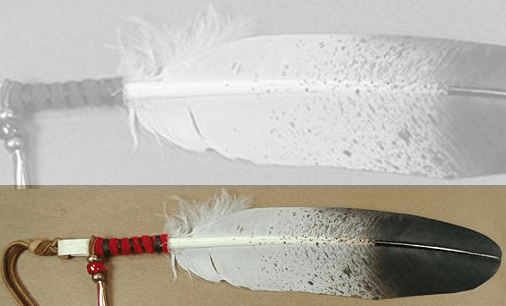 1 Wholeness. All things are interrelated.
Everything in the universe is
part of a single whole.
2 Change. There are two kinds of
change. The coming together of
things, and the coming apart of things.
Both kinds of change are necessary.
3 Change occurs in cycles or patterns.
They are not random or accidental
changes.
4 The physical world is real. The
spiritual world is real. They are
two aspects of one reality. There are
separate laws which govern each.
Breaking of a spiritual principle will affect
the physical world and visa versa.
A balanced life is one that honors both.
5 People are physical and spiritual
beings.
6 People can acquire new gifts, but
they must struggle to do so. The
process of developing new personal
qualities may be called “true learning.”
7 There are four dimensions of
true learning. A person learns in
a whole and balanced manner when
the mental, spiritual, physical, and
emotional dimensions are involved in
the process.
8 The spiritual dimension of
human development has four
related capacities:
• The capacity to have and to respond
to dreams, visions, ideals, spiritual
teachings, goals and theories.
• The capacity to accept these as a
reflection of our unknown or unrealized
potential.
• The capacity to express these using
symbols in speech, art, or mathematics.
• The capacity to use this symbolic
expression towards action directed at
making the possible a reality.
9 People must actively participate
in the development of their own
potential.
10 A person must decide to develop
their own potential. The
path will always be there for those who
decide to travel it.
11 Any person who sets out on a
journey of self-development
will be aided. Guides, teachers, and
protectors will assist the traveler.
12 The only source of failure is a
person’s own failure to follow
the teachings.
Read full text:
1 Wholeness. All things are interrelated.
Everything in the universe is
part of a single whole.
2 Change. There are two kinds of
change. The coming together of
things, and the coming apart of things.
Both kinds of change are necessary.
3 Change occurs in cycles or patterns.
They are not random or accidental
changes.
4 The physical world is real. The
spiritual world is real. They are
two aspects of one reality. There are
separate laws which govern each.
Breaking of a spiritual principle will affect
the physical world and visa versa.
A balanced life is one that honors both.
5 People are physical and spiritual
beings.
6 People can acquire new gifts, but
they must struggle to do so. The
process of developing new personal
qualities may be called “true learning.”
7 There are four dimensions of
true learning. A person learns in
a whole and balanced manner when
the mental, spiritual, physical, and
emotional dimensions are involved in
the process.
8 The spiritual dimension of
human development has four
related capacities:
• The capacity to have and to respond
to dreams, visions, ideals, spiritual
teachings, goals and theories.
• The capacity to accept these as a
reflection of our unknown or unrealized
potential.
• The capacity to express these using
symbols in speech, art, or mathematics.
• The capacity to use this symbolic
expression towards action directed at
making the possible a reality.
9 People must actively participate
in the development of their own
potential.
10 A person must decide to develop
their own potential. The
path will always be there for those who
decide to travel it.
11 Any person who sets out on a
journey of self-development
will be aided. Guides, teachers, and
protectors will assist the traveler.
12 The only source of failure is a
person’s own failure to follow
the teachings.
Read full text:
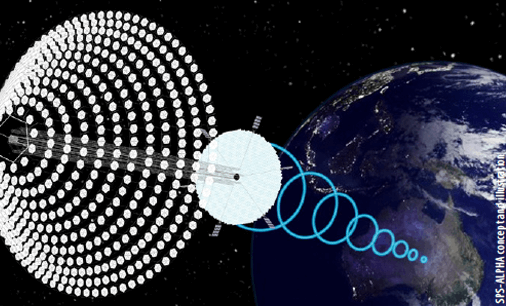
 New Zealand’s national airline
says it is trialling edible coffee
cups in a bid to reduce the amount of
waste on board its planes. The cups, by
local company Twiice, are made from
vanilla-flavoured biscotti —and are
apparently “leak-proof”.
Air New Zealand, which serves
more than eight million cups of coffee
a year, said it wanted to reduce the
amount of waste sent to landfills. But
some said a change in cups was not a
big enough environmental commitment.
In a statement, Air New Zealand
said the coffee cups were being tested
“in the air and on the ground” as part
of its efforts to find “innovative ways
to meet sustainability challenges”.
“The cups have been a big hit with
the customers who have used these,
and we’ve also been using the cups as
dessert bowls,” Air New Zealand’s Niki
Chave said. Jamie Cashmore, the cofounder
of Twiice, said the cups “could
have a really positive impact on the
environment”.
In the UK, some 2.5 billion coffee
cups are estimated to be thrown away
each year and only 0.25% of them are
recycled. Air New Zealand said the trial
of edible cups followed a recent switch
to compostable cups made of paper
and corn, used in all of its aircraft and
lounges. But some social media users
said the airline needed to change more
than coffee cups if it wanted to help the
environment.
New Zealand’s national airline
says it is trialling edible coffee
cups in a bid to reduce the amount of
waste on board its planes. The cups, by
local company Twiice, are made from
vanilla-flavoured biscotti —and are
apparently “leak-proof”.
Air New Zealand, which serves
more than eight million cups of coffee
a year, said it wanted to reduce the
amount of waste sent to landfills. But
some said a change in cups was not a
big enough environmental commitment.
In a statement, Air New Zealand
said the coffee cups were being tested
“in the air and on the ground” as part
of its efforts to find “innovative ways
to meet sustainability challenges”.
“The cups have been a big hit with
the customers who have used these,
and we’ve also been using the cups as
dessert bowls,” Air New Zealand’s Niki
Chave said. Jamie Cashmore, the cofounder
of Twiice, said the cups “could
have a really positive impact on the
environment”.
In the UK, some 2.5 billion coffee
cups are estimated to be thrown away
each year and only 0.25% of them are
recycled. Air New Zealand said the trial
of edible cups followed a recent switch
to compostable cups made of paper
and corn, used in all of its aircraft and
lounges. But some social media users
said the airline needed to change more
than coffee cups if it wanted to help the
environment.  Park ‘n’ sleep. Perchance to dream.
Definitely to warm up and rest a
while. ... What was once a transit bus,
and most recently a coach for travelling
hockey players in Quebec City,
took to Toronto’s downtown streets on
Tuesday evening (Dec 3).
The “Shelter Bus” it’s called —retrofitted
with 20 sleeping spaces, a lounge
area, kitchenette, washroom and
bumper-to-bumper compassion.
From 8 p.m. to at least 8 a.m.,
throughout the winter, the full-size
vehicle will pick up homeless and transients,
the hungry and the shivering, in
an undertaking so straight-up sensible
one wonders why nobody ever thought
about it before.
“We recognize that homelessness
in particular is a critical issue here in
Toronto during the winter months,”
says Zubair Afzal, president of
Ahmadiyya Muslim Youth Association,
Canada’s largest Muslim youth
organization, with chapters across
the country and headquartered in Toronto.
“The weather can be extremely
cold, especially at night.
“The shelter bus will be travelling
through downtown Toronto every
night for the next three months, to
pick up homeless individuals who
do not have any shelter. And provide
them with hot meals as well.”
Read full text and watch video:
Park ‘n’ sleep. Perchance to dream.
Definitely to warm up and rest a
while. ... What was once a transit bus,
and most recently a coach for travelling
hockey players in Quebec City,
took to Toronto’s downtown streets on
Tuesday evening (Dec 3).
The “Shelter Bus” it’s called —retrofitted
with 20 sleeping spaces, a lounge
area, kitchenette, washroom and
bumper-to-bumper compassion.
From 8 p.m. to at least 8 a.m.,
throughout the winter, the full-size
vehicle will pick up homeless and transients,
the hungry and the shivering, in
an undertaking so straight-up sensible
one wonders why nobody ever thought
about it before.
“We recognize that homelessness
in particular is a critical issue here in
Toronto during the winter months,”
says Zubair Afzal, president of
Ahmadiyya Muslim Youth Association,
Canada’s largest Muslim youth
organization, with chapters across
the country and headquartered in Toronto.
“The weather can be extremely
cold, especially at night.
“The shelter bus will be travelling
through downtown Toronto every
night for the next three months, to
pick up homeless individuals who
do not have any shelter. And provide
them with hot meals as well.”
Read full text and watch video:
 Rabbit –more precisely the European
Rabbit, found in Portugal,
Spain and France– is in danger of
extinction, along with over 30,000
animal, bird and plant species.
The age-old expression “breeding
like rabbits” has fallen foul of the
scourge of RHD (Rabbit Haemorrhagic
disease) a virus that originated in
China in the early 80s, and arrived in
Europe a few years later.
The situation saw European rabbits
entering the ‘Red List of Endangered
Species’ over a decade ago, under the
classification “almost threatened”. But
now a new spike in the virus has wiped
out around 70% of the rabbit population,
leading to the species becoming yet another that is “threatened by
extinction”. And because other species
–particularly the Iberian Lynx and
Iberian Imperial Eagle– survive largely
on a diet of rabbit, their survival too is
now much more precarious.
In its latest statement, the IUCN describes
the situation today as a “biodiversity
crisis” in which climate change
is “adding to the multiple threats” that
species face. “We need to act urgently
and decisively to curb the crisis”, says
the statement, which in fact has some
‘good news’, in that efforts to ‘save’ 10
species –eight birds and two fish ...
Read full text:
Sign the petition:
Rabbit –more precisely the European
Rabbit, found in Portugal,
Spain and France– is in danger of
extinction, along with over 30,000
animal, bird and plant species.
The age-old expression “breeding
like rabbits” has fallen foul of the
scourge of RHD (Rabbit Haemorrhagic
disease) a virus that originated in
China in the early 80s, and arrived in
Europe a few years later.
The situation saw European rabbits
entering the ‘Red List of Endangered
Species’ over a decade ago, under the
classification “almost threatened”. But
now a new spike in the virus has wiped
out around 70% of the rabbit population,
leading to the species becoming yet another that is “threatened by
extinction”. And because other species
–particularly the Iberian Lynx and
Iberian Imperial Eagle– survive largely
on a diet of rabbit, their survival too is
now much more precarious.
In its latest statement, the IUCN describes
the situation today as a “biodiversity
crisis” in which climate change
is “adding to the multiple threats” that
species face. “We need to act urgently
and decisively to curb the crisis”, says
the statement, which in fact has some
‘good news’, in that efforts to ‘save’ 10
species –eight birds and two fish ...
Read full text:
Sign the petition:

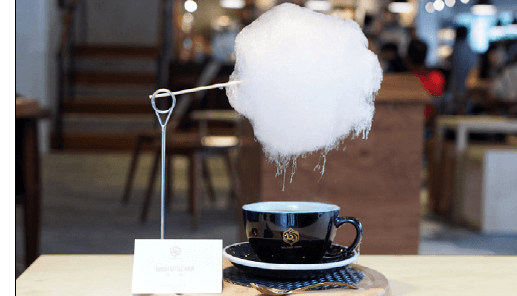 Apart from your regular cup of latte, Mellower Coffee Singapore
also serves this signature creation. The concept is that, by suspending a
fluff ball of cotton candy over a cup of Americano, the heat would slowly melt the
cotton candy and caused it to drip into the drink. www.mellowercoffee.com
Apart from your regular cup of latte, Mellower Coffee Singapore
also serves this signature creation. The concept is that, by suspending a
fluff ball of cotton candy over a cup of Americano, the heat would slowly melt the
cotton candy and caused it to drip into the drink. www.mellowercoffee.com
 Teddy bears are so passé. Quirky, kooky and so
kawaii (that’s Japanese for cuteness), these anthropomorphic plant pals have one
purpose: to cuddle with your little ones. By Jellycat. store.moma.org
Teddy bears are so passé. Quirky, kooky and so
kawaii (that’s Japanese for cuteness), these anthropomorphic plant pals have one
purpose: to cuddle with your little ones. By Jellycat. store.moma.org
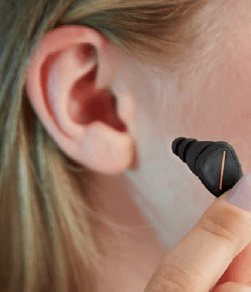 These acoustic ear filters lower
sound to a safer level while letting you
enjoy clear music, conversations and
more. www.thegrommet.com
These acoustic ear filters lower
sound to a safer level while letting you
enjoy clear music, conversations and
more. www.thegrommet.com
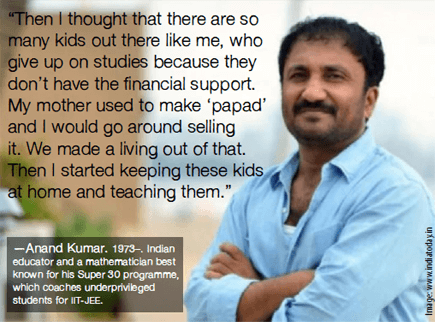
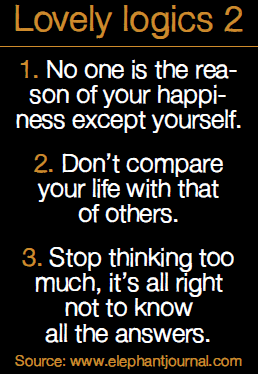 1. No one is the reason
of your happiness
except yourself.
1. No one is the reason
of your happiness
except yourself. The Master of Renewable Energy
(MS) program helps students
develop practical skills and knowledge
required to critically evaluate alternative
energy sources, and provide applied
solutions to the energy demand.
The major is decidedly interdisciplinary
in nature, focusing on the
underlying natural processes relating
to renewable energy and employing
the scientific method. The Master of
Renewable Energy (MS) program is
offered online via distance learning.
After evaluating both academic record
and life experience, AIU staff working
in conjunction with Faculty and
Academic Advisors will assist students
in setting up a custom-made program,
designed on an individual basis. This
flexibility to meet student needs is
seldom found in other distance learning
programs. Our online program
does not require all students to take
the same subjects/courses, use the
same books, or learning materials.
Instead, the online Master of Renewable
Energy (MS) curriculum is
designed individually by the student
and academic advisor. It specifically
addresses strengths and weaknesses
with respect to market opportunities
in the student’s major and intended
field of work. Understanding that
industry and geographic factors should influence the content of the
curriculum instead of a standardized
one-fits-all design is the hallmark
of AIU’s unique approach to adult
education. This philosophy addresses
the dynamic and constantly changing
environment of working professionals
by helping adult students in reaching
their professional and personal
goals within the scope of the degree
program.
The Master of Renewable Energy
(MS) program helps students
develop practical skills and knowledge
required to critically evaluate alternative
energy sources, and provide applied
solutions to the energy demand.
The major is decidedly interdisciplinary
in nature, focusing on the
underlying natural processes relating
to renewable energy and employing
the scientific method. The Master of
Renewable Energy (MS) program is
offered online via distance learning.
After evaluating both academic record
and life experience, AIU staff working
in conjunction with Faculty and
Academic Advisors will assist students
in setting up a custom-made program,
designed on an individual basis. This
flexibility to meet student needs is
seldom found in other distance learning
programs. Our online program
does not require all students to take
the same subjects/courses, use the
same books, or learning materials.
Instead, the online Master of Renewable
Energy (MS) curriculum is
designed individually by the student
and academic advisor. It specifically
addresses strengths and weaknesses
with respect to market opportunities
in the student’s major and intended
field of work. Understanding that
industry and geographic factors should influence the content of the
curriculum instead of a standardized
one-fits-all design is the hallmark
of AIU’s unique approach to adult
education. This philosophy addresses
the dynamic and constantly changing
environment of working professionals
by helping adult students in reaching
their professional and personal
goals within the scope of the degree
program.
 Atlantic International University is accredited by the Accreditation Service for International
Schools, Colleges and Universities (ASIC). ASIC Accreditation is an internationally
renowned quality standard for colleges and universities. Visit ASIC’s Directory of Accredited
Colleges and Universities. ASIC is a member of CHEA International Quality Group
(CIQG) in the USA, an approved accreditation body by the Ministerial Department of the Home Office
in the UK, and is listed in the International Directory of the Council for Higher Education Accreditation
(CHEA). The University is based in the United States and was established by corporate charter in 1998.
Atlantic International University is accredited by the Accreditation Service for International
Schools, Colleges and Universities (ASIC). ASIC Accreditation is an internationally
renowned quality standard for colleges and universities. Visit ASIC’s Directory of Accredited
Colleges and Universities. ASIC is a member of CHEA International Quality Group
(CIQG) in the USA, an approved accreditation body by the Ministerial Department of the Home Office
in the UK, and is listed in the International Directory of the Council for Higher Education Accreditation
(CHEA). The University is based in the United States and was established by corporate charter in 1998.
 In some cases, accredited colleges
may not accept for transfer courses and degrees
completed at unaccredited colleges, and some
employers may require an accredited degree as
a basis for eligibility for employment. Potential
students should consider how the above may affect
their interests, AIU respects the unique rules and
regulations of each country and does not seek to
influence the respective authorities. In the event
that a prospective student wishes to carry out any
government review or process in regards to his
university degree, we recommend that the requirements
of such are explored in detail with the relevant
authorities by the prospective student as the
university does not intervene in such processes.
AIU students can be found in over 180 countries,
they actively participate and volunteer
in their communities as part of their academic
program and have allocated thousands of service
hours to diverse causes and initiatives. AIU
programs follow the standards commonly used by
colleges and universities in the United States with
regards to the following: academic program
structure, degree issued, transcript, and
other graduation documents.
AIU graduation documents can include
an apostille and authentication from the
US Department of State to facilitate their
use internationally.
In some cases, accredited colleges
may not accept for transfer courses and degrees
completed at unaccredited colleges, and some
employers may require an accredited degree as
a basis for eligibility for employment. Potential
students should consider how the above may affect
their interests, AIU respects the unique rules and
regulations of each country and does not seek to
influence the respective authorities. In the event
that a prospective student wishes to carry out any
government review or process in regards to his
university degree, we recommend that the requirements
of such are explored in detail with the relevant
authorities by the prospective student as the
university does not intervene in such processes.
AIU students can be found in over 180 countries,
they actively participate and volunteer
in their communities as part of their academic
program and have allocated thousands of service
hours to diverse causes and initiatives. AIU
programs follow the standards commonly used by
colleges and universities in the United States with
regards to the following: academic program
structure, degree issued, transcript, and
other graduation documents.
AIU graduation documents can include
an apostille and authentication from the
US Department of State to facilitate their
use internationally.
 The School of Business and Economics
allows aspiring and practicing
professionals, managers, and entrepreneurs
in the private and public sectors
to complete a self paced distance
learning degree program of the highest
academic standard.
The ultimate goal is to empower
learners and help them take advantage
of the enormous array of resources
from the world environment in order
to eliminate the current continuum of
poverty and limitations.
Degree programs are designed for
those students whose professional experience has been in business,
marketing, administration, economics,
finance and management.
The School of Business and Economics
allows aspiring and practicing
professionals, managers, and entrepreneurs
in the private and public sectors
to complete a self paced distance
learning degree program of the highest
academic standard.
The ultimate goal is to empower
learners and help them take advantage
of the enormous array of resources
from the world environment in order
to eliminate the current continuum of
poverty and limitations.
Degree programs are designed for
those students whose professional experience has been in business,
marketing, administration, economics,
finance and management.
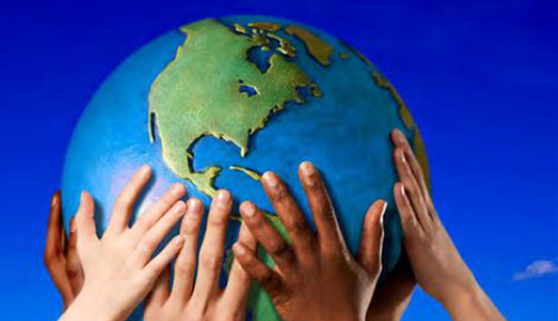 The School of Social and Human Studies
is focused on to the development of
studies which instill a core commitment
to building a society based on social and
economic justice and enhancing opportunities
for human well being.
The founding principles lie on the
basic right of education as outlined
in the Declaration of Human Rights.
We instill in our students a sense of
confidence and self reliance in their
ability to access the vast opportunities
available through information channels,
the world wide web, private, public,
nonprofit, and nongovernmental organizations in an ever expanding
global community.
Degree programs are aimed towards
those whose professional life has been
related to social and human behavior,
with the arts, or with cultural studies.
The School of Social and Human Studies
is focused on to the development of
studies which instill a core commitment
to building a society based on social and
economic justice and enhancing opportunities
for human well being.
The founding principles lie on the
basic right of education as outlined
in the Declaration of Human Rights.
We instill in our students a sense of
confidence and self reliance in their
ability to access the vast opportunities
available through information channels,
the world wide web, private, public,
nonprofit, and nongovernmental organizations in an ever expanding
global community.
Degree programs are aimed towards
those whose professional life has been
related to social and human behavior,
with the arts, or with cultural studies.
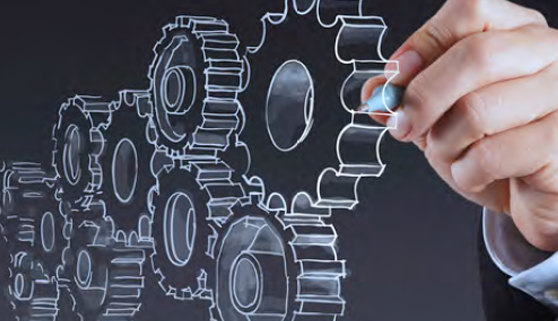 The School of Science and Engineering
seeks to provide dynamic, integrated,
and challenging degree programs
designed for those whose experience
is in industrial research, scientific production,
engineering and the general
sciences. Our system for research and
education will keep us apace with the
twenty-first century reach scientific
advance in an environmentally and
ecologically responsible manner to allow
for the sustainability of the human
population. We will foster among our
students a demand for ethical behavior,
an appreciation for diversity, an understanding
of scientific investigation, knowledge of design innovation, a
critical appreciation for the importance
of technology and technological change
for the advancement of humanity.
The School of Science and Engineering
seeks to provide dynamic, integrated,
and challenging degree programs
designed for those whose experience
is in industrial research, scientific production,
engineering and the general
sciences. Our system for research and
education will keep us apace with the
twenty-first century reach scientific
advance in an environmentally and
ecologically responsible manner to allow
for the sustainability of the human
population. We will foster among our
students a demand for ethical behavior,
an appreciation for diversity, an understanding
of scientific investigation, knowledge of design innovation, a
critical appreciation for the importance
of technology and technological change
for the advancement of humanity.
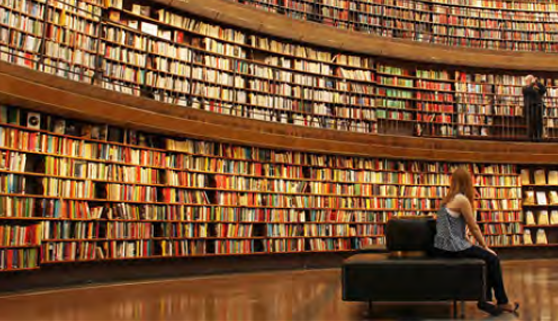 With access to a global catalog created and maintained collectively by more than
9,000 participating institutions, AIU students have secured excellent research
tools for their study programs.
With access to a global catalog created and maintained collectively by more than
9,000 participating institutions, AIU students have secured excellent research
tools for their study programs.